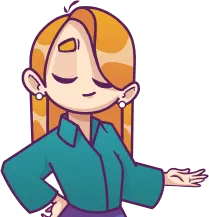
16.3 human reproduction
Assessment
•

Cindy Colon
•
Biology
•
9th - 12th Grade
•
657 plays
•
Medium
Improve your activity
Higher order questions
Match
•
Reorder
•
Categorization
.svg)
actions
Add similar questions
Add answer explanations
Translate quiz
Tag questions with standards
More options
12 questions
Show answers
1.
Multiple Choice
Sexual reproduction is vital to the propagation of the Human race. Which of the following sequences represents the correct order of events in the formation of a human fetus?
Zygote → Blastocyst → Embryo → Fertilization
Fertilization → Zygote → Blastocyst → Embryo
Blastocyst → Embryo → Differentiation → Zygote
Fertilization → Growth → Differentiation → Zygote
2.
Multiple Choice
In which of the following structures of the female human reproductive system is the blastocyst implanted during normal human development?
Ovary
uterus
vagina
amniotic sac
3.
Multiple Choice
Spermatogenesis (meiosis) is the process by which sperm develop and mature. Which of the following sequences correctly describes the anatomical path of spermatozoa from formation to ejaculation?
. testes, vas deferens, prostate, urethra
testes, urethra, prostate, vas deferens
prostate, vas deferens, testes, urethra
prostate, urethra, testes, vas deferens
4.
Multiple Choice
The main function of the placenta is to :
allow direct exchange of blood between the mother and fetus for nutrition.
facilitate gas and nutrient exchange between the fetus and mother.
support the weight of the developing fetus in the uterus.
store gases and nutrients for later delivery to the fetus.
5.
Multiple Choice

A reproductive system is represented in the diagram below. Which structure is correctly paired with its reproductive function?
A – pathway of gametes
C– production of sperm
D– regulation of homeostasis
B– synthesis of progesterone
6.
Multiple Choice

The diagram below represents structures found in the female reproductive system. If the areas labeled A were completely blocked on both sides, the most likely result would be that
egg production would stop
sperm production would stop
fertilization would not occur
an embryo would develop

Explore this activity with a free account
Find a similar activity
Create activity tailored to your needs using
.svg)

Animals
•
KG - 4th Grade

Introduction to Ecology & Levels of the Environment
•
6th - 8th Grade

Life Cycle
•
2nd Grade

Muscle Contraction
•
11th - 12th Grade

Plants
•
2nd Grade

Earth's Early History
•
2nd Grade

Evolution
•
4th Grade

Environments
•
1st - 2nd Grade



